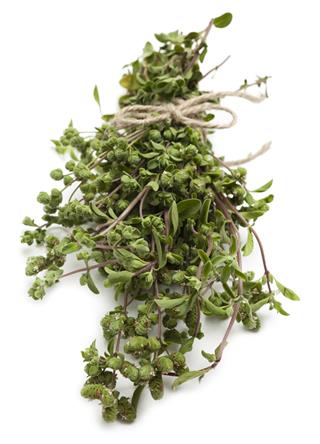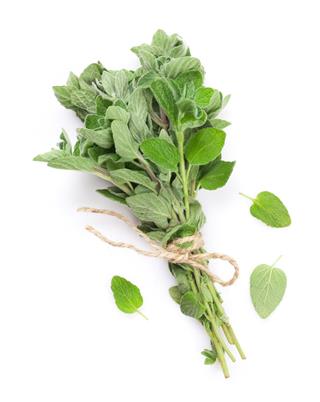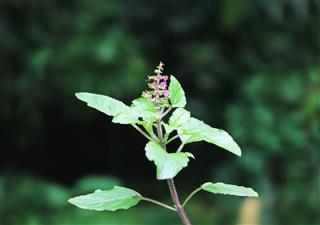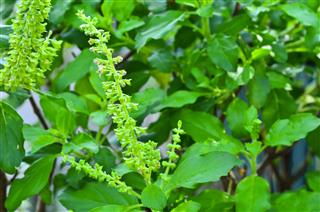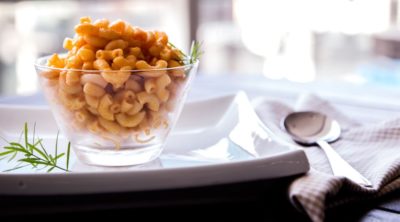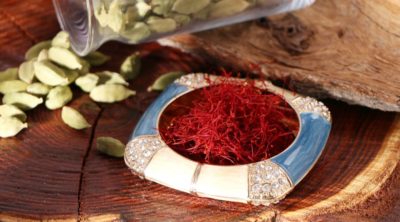
Rosemary is a must-have for meat recipes. But, if you don’t have it, you need not worry. We list not one, but several good substitutes for rosemary, and also tell you about their various uses.
Did You Know?
It is believed that rosemary flowers are blue because the Virgin Mary placed Her blue cloak on a rosemary bush after washing it.
Rosemary is a Mediterranean herb that is popularly used in cooking since thousands of years. It is most common in meat-based dishes like chicken, pork, lamb, and beef―especially grilled meats―while its other uses include salad dressings, soups, stews, sauces, and marinades. This herb is also famous for its various health benefits like reducing blood pressure, memory loss, and improving one’s appetite. There are more than 30 different varieties of this incredibly useful herb. The plant is an evergreen one, bearing small leaves that are green on the top and white below. While most suited to the Mediterranean region and Asia, it can grow in cold regions too, except in freezing temperatures.
The other diverse uses of rosemary are flavoring oils and vinegars, as an ingredient of herbal tea, with fried vegetables, and even desserts. It even finds a place in gardens as an ornamental plant and in landscapes. It has a complex flavor that can be best described as pine-like, with a pungent aroma and a tinge of citrus. When choosing a substitute for a herb this important, it’s imperative to choose a good one. Some of the most apt alternatives for rosemary have been listed here.
Thyme
As a Substitute in:
Italian cuisine, herbal tea, barbecuing, lamb dishes, chicken, pork, sauces, flavored vinegar, roast potatoes, fried vegetables, marinades, soups, salads, pasta, flavoring breads, eggs, fish, oranges, tomatoes, and grilled meats.
Appearance
Tiny, oval, greenish leaves growing in clusters on a low-growing woody stem. There are many varieties with little visible differences, making it difficult to tell one from another.
Flavor
Thyme can be described as being fragrant, intense, sweet, earthy, mildly pungent, warm, citrus-like, and minty with a dry aroma. It has a slight tinge of bitterness which can be removed by adding the herb in the early stages of cooking. It balances other flavors of a recipe. Compared to other herbs, it retains its flavor well on drying.
Other Uses
Meat, poultry, pork, sauces, for flavoring cheese and breads, making butter rubs, salmon, bean soups, stuffing, herbal tea, pasta, roasted vegetables like carrots, beets and fennel, tomatoes, roast potatoes, stocks, stews, barbecued meats, Italian recipes, lamb, marinades, casseroles, turkey, flavored vinegars, salads, roast duck, and risotto.
Tarragon
As a Substitute in:
Barbecued meats, chicken, fish, eggs, sauces, flavoring oils and vinegars, desserts, soups, steaks, fried vegetables, salads, beef, pork, lamb, mushrooms, flavored butter, and cheese.
Appearance
1″ tapered, delicate, bright green leaves growing on a small shrub with hardy branches. The leaves are spear-like, smooth, and glossy in appearance, and curl on drying.
Flavor
The flavor of tarragon is variously described as slight, bittersweet, anise-like, aromatic, spicy, minty, and tinges of warm and cool. It has a tendency to overshadow other ingredients of the dish. It should be added towards the end to preserve its flavor and prevent bitterness.
Other Uses
Chicken, fish, eggs, Bearnaise sauce, tarragon vinegar, soft drinks, cakes, soups, steaks, flavored butter, vegetables like green beans and carrots, asparagus, salad dressings, beef, pork, lamb, flavored oils, pies, mushrooms, cheese, butter, French cuisine, sweet corn, and spreads.
Savory
As a Substitute in:
Stuffing, meat, beans, desserts, soups, stews, marinades, vegetables, chicken, lamb, beef, eggs, salads, wild game, flavored vinegars, herbal tea, mushrooms, and fish.
Appearance
Savory is of two types – Summer and Winter. Both types have small, green, spiky leaves on reddish stems, on a two-foot tall plant. The leaves are hard and upright. Appearance is similar to the rosemary plant. Flowers are small and rose-like.
Flavor
The flavor of savory can be described as delicate to strong, minty, thyme-like, peppery, intense, and delicious with a sweet aroma. Belonging to the mint family, it has a similar flavor.
Other Uses
Stuffing, meat dishes, beans such as string beans, broad beans and limas, pies, cakes, soups, stews, marinades, vegetables like cabbage, cauliflower and mixed greens, rice, sausages, chicken, fish, pork, beef, lamb, eggs, flavored vinegars, salad dressing, wild game, barbecued meat, herbal tea, mushrooms, fish such as mackerel and bluefish, Bulgarian dishes, and gazpacho.
Oregano
As a Substitute in:
Pizza, fried vegetables, fish, meat, lamb, kebabs, salad, barbecued meats, sauces, pasta, stuffing, tomatoes, egg, cheese, and beans.
Appearance
Light to dark green leaves of 1 – 3 cm length growing in opposite manner on a plant that grows less than a meter tall. The flowers appear in spikes, and may be white, pink, or purple.
Flavor
Oregano’s flavor can be described as aromatic, warm, slightly bitter, strong, pungent, sweet-cum-spicy, rich, sharp, minty, earthy, which gives a numbing feel. Unlike other spices which mellow on drying, oregano’s flavor intensifies.
Other Uses
Italian-American recipes, pizza, roasted or fried vegetables, fish, meat, mutton, lamb, kebabs, salad, barbecues, casseroles, pasta sauce, soups, sauces, poultry stuffing, cooked tomatoes, egg, cheese, with garlic, lasagna, Greek food, zucchinis, spaghetti sauces, and chili recipes.
Basil
As a Substitute in:
Sauces, grilled meat, chicken, desserts, salads, flavored oils and vinegar, curries, soups, eggs, fish, poultry, ice creams, herbal tea, pizza, roasted potatoes, beans, flavoring cheese, and pasta.
Appearance
Large, greenish- to violet-colored leaves on a bushy plant that grows to be about 1½ to 2½ feet tall. Small, white or purple flowers grow in spikes. This plant is a fast-growing annual.
Flavor
Basil’s flavor can be described as peppery, slightly sweet, minty, aromatic, spicy, clove-like, anise-like, pungent, and lemon-like or cardamom-like. It should be added late while cooking to prevent breakdown of flavor.
Other Uses
Sauces, fried chicken, ice creams, chocolates, salads, tomato sauces, flavored vinegars, curries, soups, zucchinis, eggs, fish, poultry, with garlic, herbal tea, pizza, Asian, Italian and French cuisine, seafood, desserts, cocktails, vinaigrette, with potato and beans, with cheese, and pasta.
Sage
As a Substitute in:
Pork, lamb, meats, sausages, salads, cheese, garnish, seasoning, with fruits, poultry, fish, game, stuffing,sauces, soups, marinades, pies, with vegetables, eggs, omelets, beef, turkey, pudding, herbal tea, and pasta.
Appearance
Spear-shaped, gray- to green-colored leaves growing on thin woody stems of a small shrub. The leaves are veined, wrinkled, and hairy, with pebble-like texture. Bluish-colored flowers appear in whorls. The leaves are available in whole, rubbed, or in the ground form.
Flavor
The flavor of sage is described as aromatic, warm, astringent, earthy, musty, minty, lemony, delicate, piney-woody, and pungent.
Other Uses
Pork, lamb, meats, sausages, salads, pickles, cheese, garnish, seasoning, with sweet or acidic fruits like pineapple, cocktails, beverages, poultry, fish, game, stuffing, sauces, soups, chowders, marinades, pies, with vegetables like carrots, tomatoes, squashes, and eggplant, beans, eggs, omelets, pizza, beef, turkey, ravioli, risottos, pudding, tea, and pasta.
Parsley
As a Substitute in:
Stocks, Stews, curries, fried vegetables, egg dishes, pasta, sauces, roasted potatoes, poultry, fish, beans, pizza, and salads.
Appearance
A foot-tall herb with three leaflets growing in rosette form on opposite sides. Each leaflet is 1 – 4 cm long, and may be curly or flat-shaped.
Flavor
Parsley can be best described as fresh, peppery, anise-like, mild, sweet, slightly bitter, and spicy, with a lettuce-like crunch. It is best added towards the end of cooking to preserve its flavor.
Other Uses
French cuisine, stocks, stews, curries, steamed vegetables, omelets, soups, with goat cheese, steamed rice, burgers and sandwiches, pasta, sauces, scrambled eggs, potatoes, fish, poultry, pizza, casseroles, garnishing, beans, meatballs, salads, noodles, vegetables like cauliflowers, squash and carrots, chicken recipes, tomato dishes, seafood, herb mixtures, and flavored butter.
Marjoram
As a Substitute in:
Soups, stews, barbecuing, lamb dishes, flavored oils, sauce, fried vegetables, marinades, pasta, fish, and white beans.
Appearance
This is delicate herb growing up to 2 feet tall, with a woody stem and green, oval, and fuzzy leaves. It is similar in appearance to the oregano herb, though smaller.
Flavor
Marjoram’s taste can be described as sweeter than oregano, aromatic, strong, distinct, minty, lemony, grassy, and subtle. It has a better flavor when used fresh.
Other Uses
Soups, Stews, dressings, sauce, heavier meat, lamb, poultry, pork, potatoes, bush beans, squash, tomato-based recipes, salads, stuffing, vegetable dishes liked zucchini and eggplant, fish, seafood, legumes, eggs, with cheese, French and English cuisine, rice dishes, vinaigrette, barbecued meats, spice rubs, marinades, and spreads.
Dill
As a Substitute in:
Fish, garnishing, eggs, salads, flavoring breads, marinades, pasta, dressings, roast potatoes, chicken, fried vegetables, grilled meat, sauces, soups, mushrooms, and sausages.
Appearance
Thin, wiry green leaves on a 2 – 2½ foot plant, that has white to yellow flowers. The plant is similar to fennel. Both leaves and seeds are used for seasoning. The seeds are brown and oval-shaped with ridges.
Flavor
Dill has a complex flavor that can be called tangy, soft, sweet, slightly lemony, tinge of parsley, celery and anise, aromatic, slightly bitter, bright, and warm. The seeds are spicier than the sweet leaves. The flavor reduces on drying.
Other Uses
Dips, fish like salmon and trout, garnishing, sandwiches, egg salads, pickles, breads, sauerkraut, cheese, with beet, marinades, with butter, making rubs, pasta, dressings, potatoes, chicken, vegetables, meat dishes, with sliced onions and cucumber, sauces, flavored chips, European and Asian cuisine, soups, turkey, mushrooms, and sausages.
Caraway
As a Substitute in:
Desserts, pudding, stocks, fried vegetables, baked items, salads, soups, flavoring breads, meat recipes, sausages, pork, herbal tea, stews, roast potatoes, and beef.
Appearance
Green herb growing up to two feet tall with thin, wiry foliage. It bears fruits called caraway seeds, that are brown, crescent-shaped, and bear ridges on them. The seeds are used more than the leaves or roots.
Flavor
Caraway seeds can be described as being peppery, earthy, sharply aromatic, lemony, anise-like, pungent, and bitter. They should be added towards the end of cooking to retain their flavor.
Other Uses
Desserts, casseroles, Indian rice recipes, European cuisine, seed cakes, sauerkraut, flavoring cheese, pudding, stocks, roasted vegetables like potatoes and sweet potatoes, baked items, dips, salads, soups, flavoring breads, meat dishes, sausages, coleslaw, pork recipes, herbal tea, stews, in making liquors, candies, and beef.
Mint
As a Substitute in:
Roasted potatoes, salads, lamb, sauces, soups, herbal tea, fried vegetables, ice creams, meat, pork, desserts, kebabs, flavoring breads, and stews.
Appearance
Small, quick-spreading herb with green leaves that have toothed margins and a fuzzy look. It may have white or pinkish flowers. The plant spreads via runners.
Flavor
Mint is fresh, sweet, aromatic, and warm, with a cool aftertaste. Peppermint and spearmint are common varieties which have sharper flavor.
Other Uses
Potatoes, peas, salads, lamb, sauce, soups, beverages like iced tea, lemonade, with fruits, jellies, with vegetables, candies, chocolates, herbal tea, Thai and Middle Eastern cuisine, cocktails, garnishing, liquors, meat, pork, dessert topping, sherbets, ice creams, dips, kebabs, scones, flavoring breads, stews, cakes, and meatballs.
Other condiments that can be used as rosemary substitutes sare smoked paprika, curry powder or Thai curry paste, substituted in equal amount. You can also substitute ¼ teaspoon dry rosemary in place of a teaspoon of fresh rosemary. Whenever possible, go with thyme, tarragon, or savory as alternatives, as these are very similar to rosemary in flavor, and will do absolute justice to your dish.











